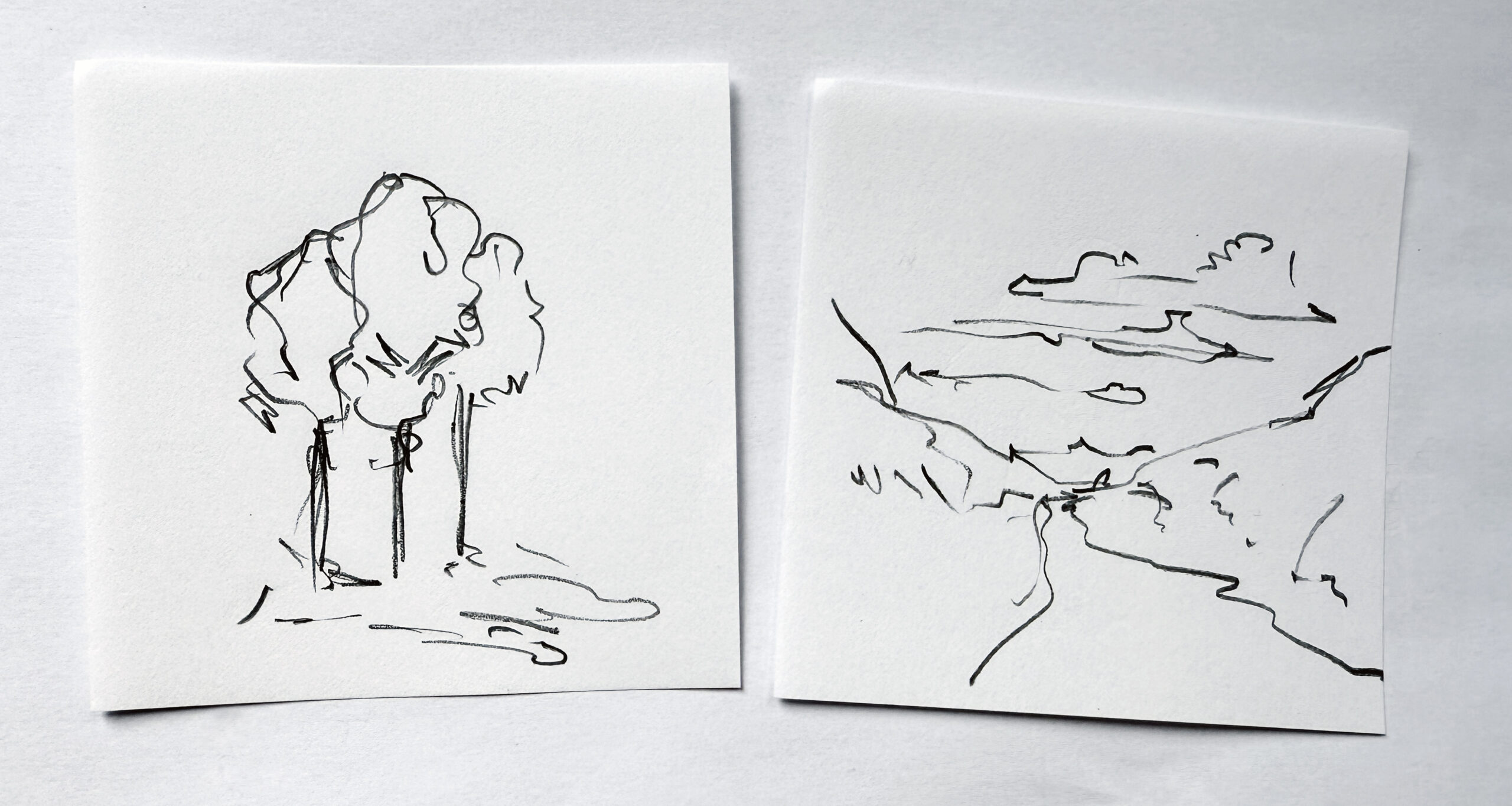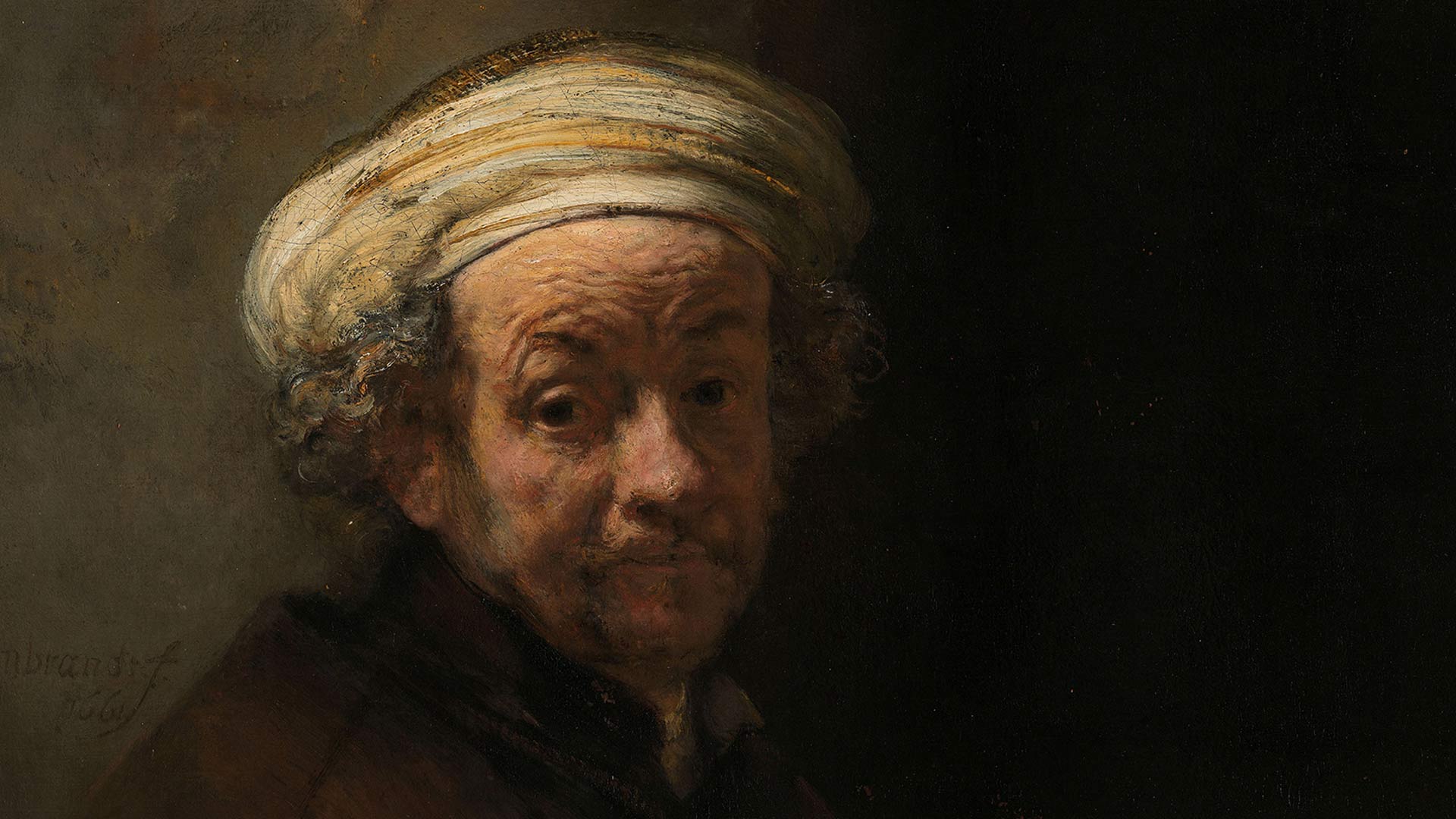Let the line flutter
Rule 1
workload …
Fluttering lines make it possible to bring in one self.
The fluttering line is kind of common sense in sketching form research to art on to ideation
Understand the whys of the approach with the fluttering lines. For this we dive into a collection of drawings.
Watch the film to learn about the first rule.
Script
First and most important rule: let the line flutter.
Now we start sketching which means hard work. It’s a matter of concentration. If you are not ready to be concentrated – then do not start sketching!
In this case, wait for a little and prepare yourself by arranging the items around you.
Now we start with the line. And actually, we start with how to draw a line.
Here I have a normal pencil of the grade HB. It is sharpened but not really ultimately sharp.
We will see that we can do a lot with the width of the line, respectively with the width of the tool that triggers the line. Because the width of the line must always be chosen in relation to the sketch.
Small sketch means sharp tool.
A larger sketch means a bold tool.
Then a quick word about the paper. This is just an ordinary 80-gram piece of paper, as it is used in printers, or on drawing pads.
Whenever we sketch, we never sketch with a single sheet of paper on the table. The best surface for drawing is a bundle of paper. Every table surface has a texture, this is like a grain or it is completely flat. Neither of these is suitable for us.
So now all is said and done. We can proceed.
The shape-giving or the searching line should always be drawn only as fast as we master it.
I’ll do an analogy: you’ve probably seen children on the ski slope going down the mountain so fast that it makes us feel a little queasy watching. Although this usually works well with children. But there we clearly see that the speed is too fast and that the line can’t really be steered that way.
We lead the line deliberately, thoughtfully, and agile. Agile is an important term. Because in the agility of the stroke, the observer recognizes the creator of the stroke. And it is precisely this human origin that fascinates us in the hand-drawn sketch. What could be more exciting than the human being for us humans? So, we exploit it and draw the line with great agility.
But agile is still an abstract term. What does it actually mean? It means being highly mobile, active, and agile.
So, let’s take highly mobile first. How much can we dare? I have now made some strokes here. All of them show flexibility. Some are perhaps too moved. It’s almost like a mannerist wiggle. Others are too straight. Or even boring. Yes, there are really boring strokes. I’ll try one here. Hmm, not so easy for me. But maybe like this …
The term „alert“ for the stroke is exciting. Adapted by impulses, always different. Just not repetitive. Sometimes big and wide, sometimes calmer, sometimes almost shaky or annoyed. Just always in different excitement.
And still the third term „agile“. I describe it as „reacting quickly to appropriate handling due to special agility“. The nimble stroke thus constantly reacts to what is at hand. This can either be a cat, drawn while sitting, or an inner image of a bird, which we have to recall from memory. The movement of the hand must be constantly compared with the model. This is a quick back-and-forth. I feel this inner exchange between hand and head like a crossfire. But only in the first 20 seconds, because then it suddenly begins to take on a life of its own. We get into the flow: the creative flow. And this flow is then very calm and eternal.
So why is the most important rule now called „let the line flutter: Because these few lines, the activity, and the agile lead to a line that looks like it is fluttering in the end. When we reach the point where drawing becomes an independent process, drawing feels as light as the fluttering of the line in a moving breeze.
This is exactly what you can practice while sketching. With the lessons and days, you will succeed better and better.
And of course, you are then in the flow as a whole person. That’s why it’s worth sketching ideas because it tickles your brain and makes you creative.
By the way, this coming into the flow happens much, much easier on paper. Because on paper we can work directly connected – pen to the brain.
The reason why this is so important? We’ll get to that later.

Draw three trees. Draw the alpine valley of Chur in Switzerland, seen from the city centre.
Why do we need fluttering lines?
Fluttering lines are the starting point of each drawing. With this kind of line, you approach the form. Your imagination will then close the gap to the more perfect things in our mind. Often these imaginations are more comprehensive than a finished drawing in pencil lines. Therefore, we abstain from any accuracy while drawing.
Go to the Rijksmuseum Amsterdam
Self-portrait as the Apostle Paul, Rembrandt van Rijn, 1661
oil on canvas, h 91cm × w 77cm

The master of all draftsmen is Rembrandt
Rembrandt is not only one of the best painters he is as well an extraordinary draftsman. When he starts he fully works with all the ten rules from Sketch&Draw.
Get a closer look in the Rijksstudio of Amsterdam’s Rijksmuseum. We built a repository of outstanding sketches and drawings for your inspiration there.
Rijksmuseum Collection for Sketch&Draw
Rembrandt is 55 years old in this self-portrait, and he still looks at himself candidly. Here he assumes the guise of a personage from the Bible, the Apostle Paul. The sword protruding from his cloak and the manuscript in his hands is the apostle’s customary attributes. By using his own face, Rembrandt encouraged the viewer to engage personally with the saint.
Take half an hour to brows the collection. Because learning from the professionals is the best thing to profit.

